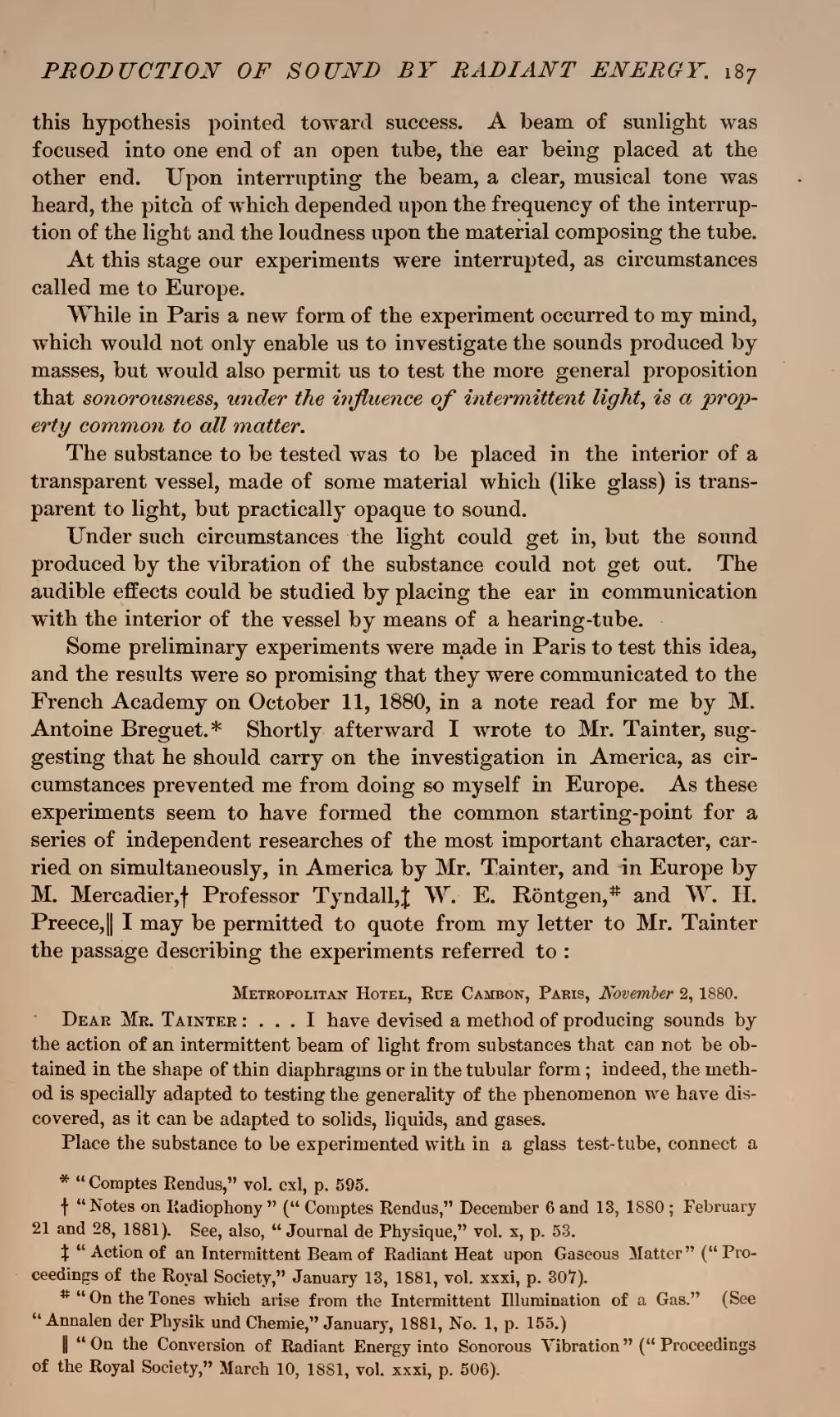this hypothesis pointed toward success. A beam of sunlight was focused into one end of an open tube, the ear being placed at the other end. Upon interrupting the beam, a clear, musical tone was heard, the pitch of which depended upon the frequency of the interruption of the light and the loudness upon the material composing the tube.
At this stage our experiments were interrupted, as circumstances called me to Europe.
While in Paris a new form of the experiment occurred to my mind, which would not only enable us to investigate the sounds produced by masses, but would also permit us to test the more general proposition that sonorousness, under the influence of intermittent light, is a property common to all matter.
The substance to be tested was to be placed in the interior of a transparent vessel, made of some material which (like glass) is transparent to light, but practically opaque to sound.
Under such circumstances the light could get in, but the sound produced by the vibration of the substance could not get out. The audible effects could be studied by placing the ear in communication with the interior of the vessel by means of a hearing-tube.
Some preliminary experiments were made in Paris to test this idea, and the results were so promising that they were communicated to the French Academy on October 11, 1880, in a note read for me by M. Antoine Breguet.[1] Shortly afterward I wrote to Mr. Tainter, suggesting that he should carry on the investigation in America, as circumstances prevented me from doing so myself in Europe. As these experiments seem to have formed the common starting-point for a series of independent researches of the most important character, carried on simultaneously, in America by Mr. Tainter, and in Europe by M. Mercadier,[2] Professor Tyndall,[3] W. E. Röntgen,[4] and W. H. Preece,[5] I may be permitted to quote from my letter to Mr. Tainter the passage describing the experiments referred to:
Dear Mr. Tainter:... I have devised a method of producing sounds by the action of an intermittent beam of light from substances that can not be obtained in the shape of thin diaphragms or in the tubular form; indeed, the method is specially adapted to testing the generality of the phenomenon we have discovered, as it can be adapted to solids, liquids, and gases.
Place the substance to be experimented with in a glass test-tube, connect a- ↑ "Comptes Rendus," vol. cxl, p. 595.
- ↑ "Notes on Radiophony" ("Comptes Rendus," December 6 and 13, 1880; February 21 and 28, 1881). See, also, "Journal de Physique," vol. x, p. 53.
- ↑ "Action of an Intermittent Beam of Radiant Heat upon Gaseous Matter" ("Proceedings of the Royal Society," January 13, 1881, vol. xxxi, p. 307).
- ↑ "On the Tones which arise from the Intermittent Illumination of a Gas." (See "Annalen der Physik und Chemie," January, 1881, No. 1, p. 155.)
- ↑ "On the Conversion of Radiant Energy into Sonorous Vibration"("Proceedings of the Royal Society," March 10, 1881, vol. xxxi, p. 506).
